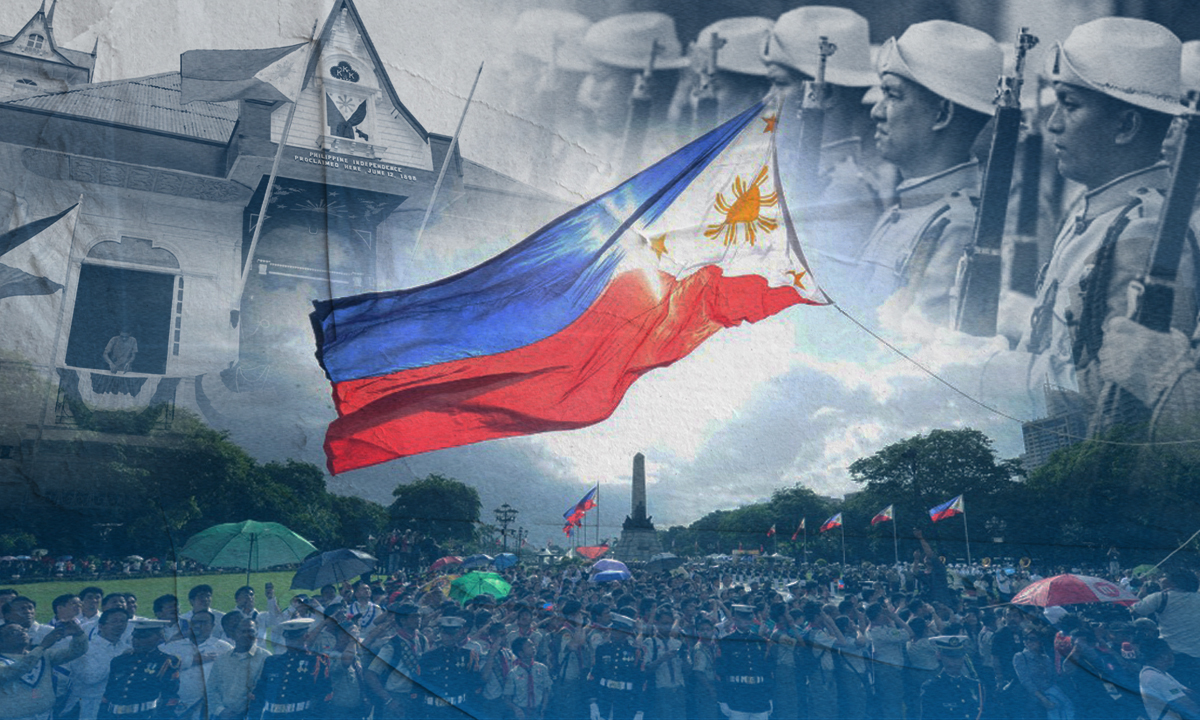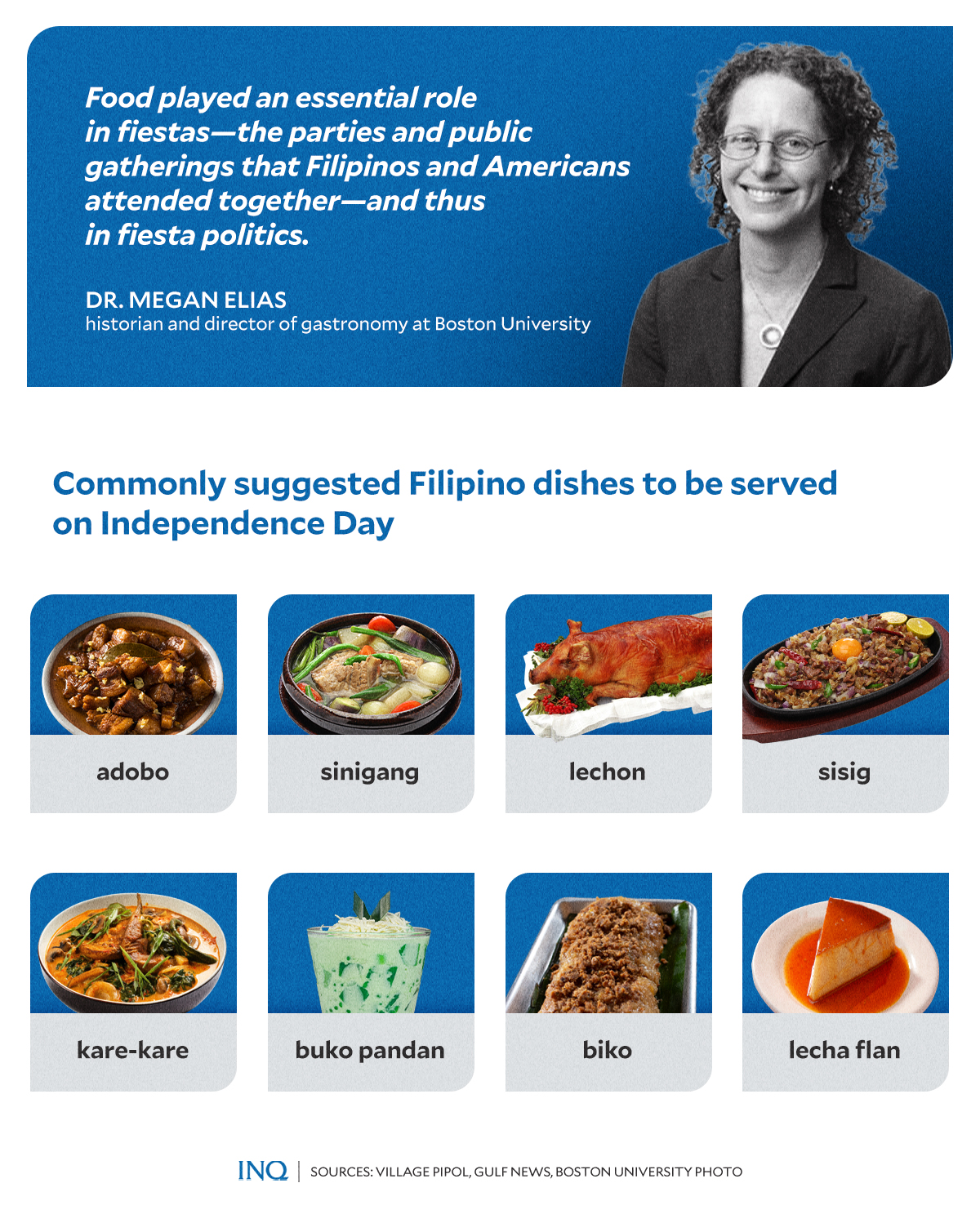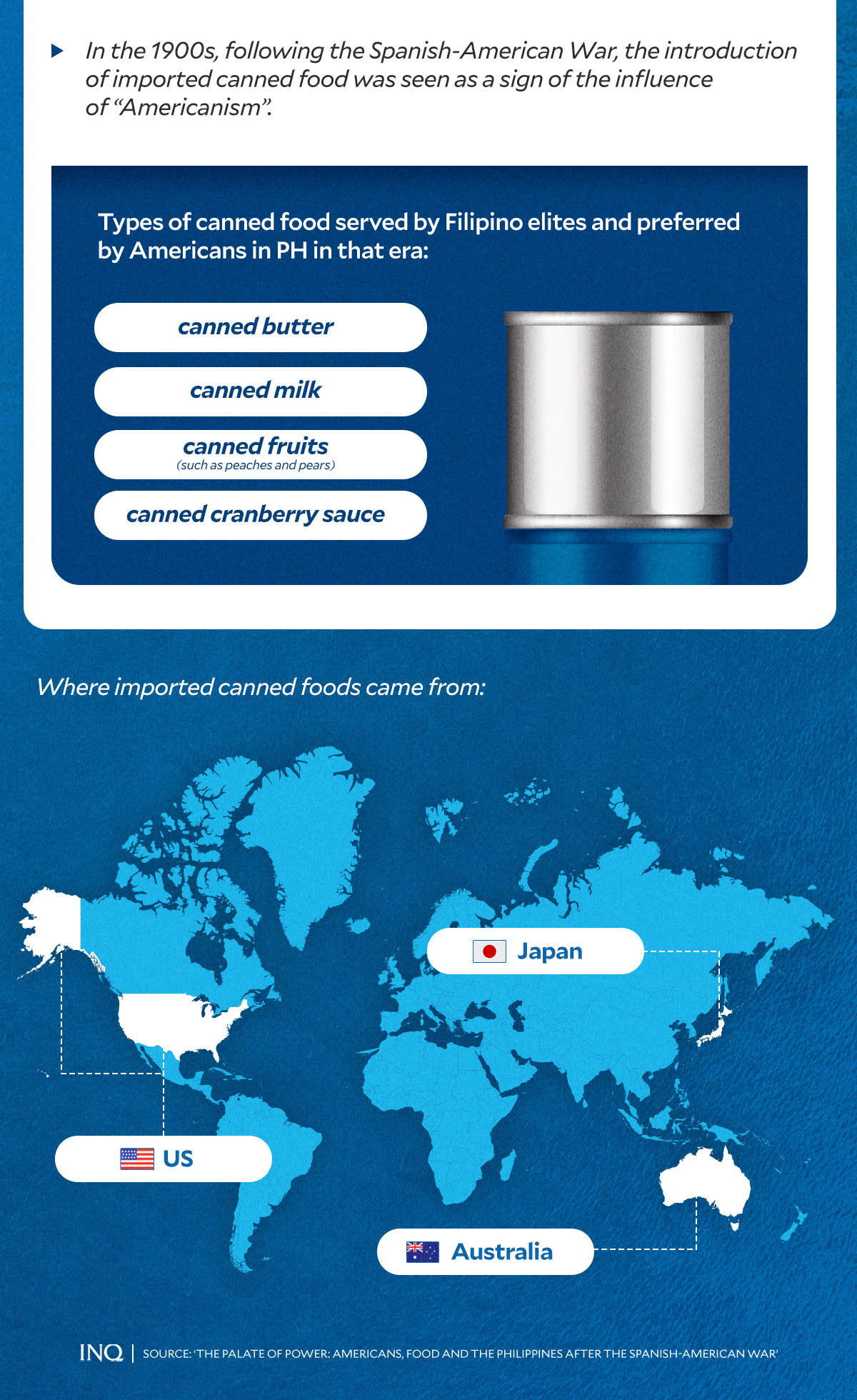MANILA, Philippines—After Spain ceded political control of the Philippines to the United States in 1898, food — from preparation and service to consumption — played a crucial role at a time when Filipino independence was still uncertain under a new colonial power.
In 1900, the Americans conducted a study of the Philippine Islands to assess their readiness for democratic self-rule. Ultimately, it resulted in a decision that they were not. A little-known factor in this decision was the role of food, which played a significant part in what historians called “fiesta politics.”
“Food played an important role in Americans’ evaluation of the Philippines’ modernity and readiness for independence,” said Dr. Megan Elias, historian and director of gastronomy at Boston University.
“Unstudied until now, food played an essential role in fiestas — the parties and public gatherings that Filipinos and Americans attended together— and thus, in fiesta politics,” Elias wrote.
In her essay, Elias argued that, despite limited sources, the records of Americans’ experiences in the Philippines during the first 16 years of American occupation (1900-1916) consistently emphasize the significance of food in the complex situation of American occupation.
‘Fiesta politics’
Fiesta politics, a term coined by historian Paul Kramer, describes the strategy used by American colonial authorities in the early 20th century to govern and influence the Philippines. This approach involved promoting and managing local festivals and cultural events to gain support from the Filipino population and positively project American rule.
Social luncheons, hosted by Filipino elites or prominent Americans in the Philippines, were a key aspect of fiesta politics.
Among the notable luncheons were those hosted by Edith Moses, the wife of Bernard Moses, who served on the Taft Commission, also known as the Second Philippine Commission. This commission, established by then-US President William McKinley, was tasked with deciding the nature of government the Philippines should adopt following its acquisition by the US.
In 1900, Edith Moses threw a “Filipina Lunch party”— which historians considered a political event — at her home in Manila. According to Elias, although the luncheon did not feature dishes and dining customs native to the Philippines, Moses considered it a great success.
“Moses offered her guests the taste of America, in both the aesthetic and the physiological senses of the world. It was a set of behaviors that could only be performed by those with disposable income, time, and a kitchen staff trained in the arts of American cooking,” said Elias.
The Filipina lunch party incorporated centerpieces and doilies from Hong Kong, an arrangement, which the invited elite Filipinos found “new and interesting,” according to Moses. She noted that it was the goal of the luncheon, an event at which Filipinas were to be educated and honored.
Moses also shared how the young Filipino women admired the little entrée forks and the coffee spoons during the luncheon. According to Elias, Moses herself said she felt somewhat superior to her guests because of the seemingly arcane detail that “[c]offee is served with teaspoons in Filipino houses.”
“Moses thought it worthwhile to record not only that her local guests were impressed with her entrée forks but also that one guest was so impressed with the coffee spoons that she said she would write to a relative in America and have some spoons sent at once,” Elias wrote, citing Moses’ writings.
This response pleased her, as it indicated the Filipinos’ appreciation for American culture, but also hinted at a deeper concern. As Elias noted, Moses might have been slightly disturbed by the ease with which American ways could be adopted, questioning the necessity of prolonged US administrative control.
Filipino hospitality
Moses, like many other American travelers in the Philippines, frequently commented on the importance of accepting Filipino hospitality.
According to Elias, Moses noted in her writings how Americans portrayed Filipinos as people who took hospitality seriously and would be deeply offended if the food they offered was rejected.
Moses described it as “[t]he terrible bugbear of hurting a Filipino’s feelings by not eating all the deadly dishes pressed upon one.”
Elias also noted how Moses frequently emphasized in her writings how she often prioritized the politics of the situation over her own physical discomfort to avoid upsetting her guests, setting aside her appetite for the sake of diplomacy.
One notable anecdote that exemplifies this was the boiled corn incident encountered by Moses.
While staying with an American doctor in Apalit, Moses visited the kitchen to observe the various gifts the locals had given to the doctor in appreciation of his work. Two Filipino women entered, bringing a gift wrapped in banana leaves, and silently awaited the reaction of the American women.
The gift, three ears of boiled corn, was an attempt to accommodate what they believed were American dietary preferences. The doctor’s wife, determined not to offend, insisted that they eat the corn despite finding it tough and unpalatable.
According to Kramer, in fiesta politics-exemplified by the boiled corn incident-“hospitality was politically open-ended” because while “Americans could dominate through sheer force if they chose,” they could not control the definition of hospitality and “were forced to recognize and adapt to Filipino customs.”
In her memoir, Moses often highlighted occasions where she adhered strictly to the principle of hospitality, regardless of how hungry she was or when she last ate. For her, the idea of turning down a gift, like the boiled corn, was inconceivable.
Although the incident may have been seen as the colonizer consuming the food of the colonized not as a display of power or respect for a distinct culture, but as a gesture of goodwill, Moses may have had different interpretations of the event.
“The moral of the corn story from Moses’ perspective seems to be that even when Filipinos receive the blessings of Western culture, they do not know what to do with them,” Elias wrote.
“This is an often-repeated refrain in American writing about the Philippines. Filipinos were portrayed as having good potential but needed training,” she added.
Elias stressed that this attitude was crucial to the pro-Imperialist argument.
“Americans could justify their presence in the Philippines as not contrary to their own core values of democracy only of their empire was based on altruism, rather than greed,” the historian wrote.
Canned food, independence
Canned food imported to the Philippines from the US, as well as Australia and Japan, also played a significant role in the colonial dynamics between Americans and Filipinos.
Americans in the Philippines often imported canned goods — such as canned milk, butter, fruits, and cranberry sauce — which they considered a far better option than what was locally available at the time.
“Somewhat less graceful in privation, Moses referred to the Philippines as ‘this land of tinned lobster.’ to express her frustration with the materials available to her for the performance of her civilizing mission,” Elias said, citing Moses’ writings.
However, even with the availability of various canned food in the country — which was only available to the Americans or the elite Filipinos — Moses frequently noted what she perceived as Filipinos’ failure to adopt American foodways correctly, particularly with canned food.
“Those who could buy canned food seem to have used it in ways that were unique to their own culture,” Elias explained.
“Although elite Filipinos had adopted the American custom of serving canned dairy products, they preferred to serve them in the can rather than transferring them to other dishes,” she added.
Moses remembered a time when, during a luncheon she hosted, the cranberry sauce was served straight from the can, which was translated as the Filipino cook’s misunderstanding of American dining customs.
However, for Filipinos at that time, historians argued that serving canned food could signify participation in global markets and a form of connoisseurship. Those who could afford canned food used it to demonstrate their readiness for independence by showing their ability to engage with modern, global commodities.
“Because independence was so important to the Filipino elites that Moses countered, we can assume that the can served as a prop in the performance of civilization and, by extension, readiness for independence,” said Elias.
“As the same can passed, however, into the hands of Americans like Edith Moses, its meaning reversed and the can became an awkward sign of unfitness,” she continued.
Elias noted that it was natural for Filipinos at that time to assume that canned food was what the Americans liked to eat best because so many Americans in the Philippines ate so much of their food imported in tin cans and seemed to esteem this cuisine more highly than they did local food
During cholera epidemics in Manila, Americans — who feared being infected from consuming local produce that was believed to be likely to carry cholera — restricted themselves to eating only imported canned food.
This incident, Elias explained, allowed Filipino observers to see how Americans “credited cans with almost magical properties of safety and purity.”
Food and politics
Though often overlooked, the connection between food and politics during the American colonial period in the Philippines was exhibited through various interactions and cultural exchanges.
One of these interactions was Moses’ visit to San Tomas, where she recalled one Filipino host offering her party a can of sweet corn dusted with confectioners’ sugar. In her records, Moses described her “barely concealed amusement” at the offering but noted that she “recovered in time to help myself liberally.”
While the gesture may be deemed simple, historians like Elias noted that the interaction highlighted the cultural misunderstandings between Americans and Filipinos.
According to Elias, the Filipino host’s belief that this was a preferred American way of serving corn played into the American imperial agenda of encouraging Filipinos to adopt American customs, even if it meant keeping them misinformed.
“That she concealed her amusement is important because it marks Moses as a participant in the conventions of fiesta politics where Americans and Filipinos shared cultural space as equals,” Elias said.
“She might laugh privately — as she did by publishing her reflections — for an American audience, but she would never mock or embarrass her hosts to their faces,” Elias stressed.
Establishing cultural identity through food
According to Kramer, many Americans had their first impressions of the Philippines through exhibits like the “Igorot Village” at the 1904 St. Louis Exposition. These exhibits catered to what he described as a “relentless hunger for sensation” with displays of “Igorot ‘nudity’ and scripted dog-eating.”
Kramer argued that such portrayals reinforced the notion of Filipinos as uncivilized, thereby enhancing Americans’ belief in their own superiority.
However, as seen in records written by Moses and other Americans in the Philippines during the American occupation, Filipinos often found ways to assert their voice within the global experience of imperialism.
“Americans seem to have been, in some ways, more comfortable with dog-eating Igarot people, who lived up to expectations of the savage, than they were with cosmopolitan Filipinos who, practicing fiesta politics, offered their own interpretations of the terms of civilization, sugaring sweet corn, using cans as serving dishes, and eating mangoes green and with salt,” Elias explained.
“Setting their own terms, they established Filipino cultural power, suggestive of Filipino political power,” she added.
What Americans ate in the Philippines and their thoughts about food reveal deeper power dynamics. Items like green corn, imported tinned beans, or unripe mangoes held meanings beyond mere sustenance.
“When Edith Moses ate beans from a can, she tasted them, but she also placed them in a discourse of civilization and savagism. […] What tasted good and what tasted bad were determined not by the palate alone, but by power dynamics in the region,” said Elias.
“When we observe the potency of meanings within even this small sample of words about food, we should be encouraged to look in other colonial settings for related discourses,” she added.
RELATED STORY: Growing Filipino diaspora means worldwide Independence Day celebrations





